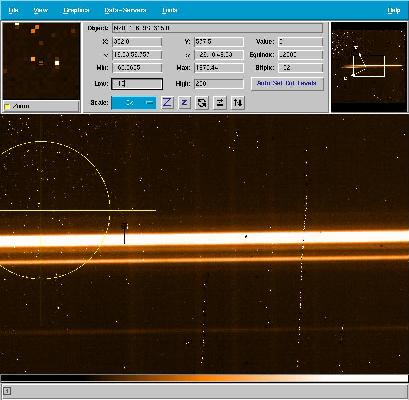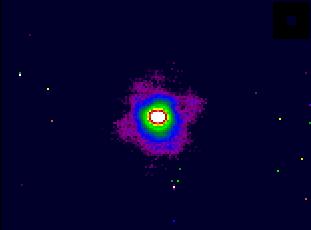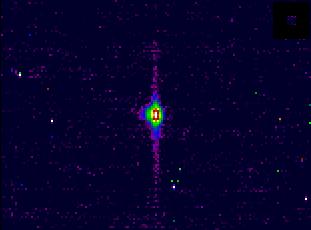![[Altair logo]](altair_logo.gif)
| You are in: Instruments > Altair > Hot News > News Update 28 June 2004 |
![[Altair logo]](altair_logo.gif)
|
Altair Hot News |
10 June 2004
We are nearly complete with the Science Verification (SV) of the near-infrared spectroscopy mode of Altair. During the three nights of June 8-10 (UT), we performed some engineering work and took the first observations using this mode. A few minor problems appeared concerning the tradeoff between spectral line profile and image quality, as well as a need for an improved flexure compensation model as detailed below. These problems are fairly minor and overall, the verification of the f/32 spectroscopic mode of NIRI+Altair appears successful. Periods during the night without SV observations were used for observations of the NIRI/Altair imaging queue and NIRI only queue.
The first half of the first night, June 8, 2004 (UT) was spent doing some engineering tests before any SV observations:
The remaining two nights, June 9 and 10, 2004 (UT) were mostly filled with SV Altair spectroscopy. Several non-sidereal targets were observed as well as sidereal targets. Different observing modes were also tried including one source far from the guide star, a few sources requiring spectroscopic mapping and one binary source (see images below). Typically, a centering check was required every 30 minutes or so while taking spectra, although this was somewhat dependent on the sky position and the specific program (as some programs require more strict slit placement than others). Performance seemed in line with expectations including the resolution of narrowly separated components.
One issue that was noted early on is the use of the order-sorting filter. This is a particularly important issue for the H band. If the H-order sorting filter is used for f/32 Altair spectroscopy, the image quality along the slit suffers because with the H-order sorting filter, the NIRI internal focus is set for maximum line profile quality (ideal for high-resolution spectroscopy). If the H filter is used rather than the H-order sorting filter, image quality is maximized at the expense of line profile shape (ideal for low-resolution spectroscopy). The extent of the image versus line-profile tradeoff and what to do about is going to be further examined during daytime. In the mean time, it is probably best to use the H filter for low-resolution spectra and the H-order sorting filter for high-resolution spectra. In J and K band observations, the sorting filters work well and should be used normally.



Above: First image: a marginally resolved object. This object is
known to be about 155 mas across with an elongated appearance.
Convolving 155 mas with the ~65 mas point spread function yields an
apparent expected size of 168 mas. The full width at half maximum of
the point spread function is outlined in red, and is about 131 mas x
175 mas (6x8 pixels), consistent with expectation. Second image: the
slit has been placed across the short axis of the object. Note that
there is some scattered light in the slit image. We believe this is
due to light scattering off the inside surface of the slit, which is
an uncoated metallic material (matte coating was applied to slitmask
before slit cutting).
Last update Aug 30, 2005; Chad Trujillo.